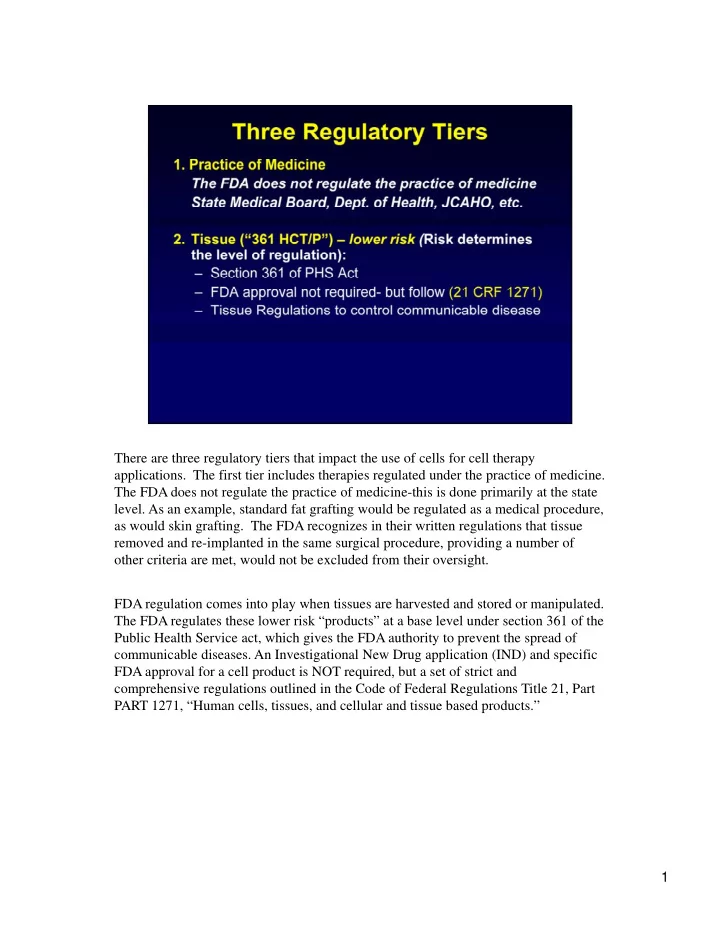

There are three regulatory tiers that impact the use of cells for cell therapy applications. The first tier includes therapies regulated under the practice of medicine. The FDA does not regulate the practice of medicine-this is done primarily at the state level. As an example, standard fat grafting would be regulated as a medical procedure, as would skin grafting. The FDA recognizes in their written regulations that tissue removed and re-implanted in the same surgical procedure, providing a number of other criteria are met, would not be excluded from their oversight. FDA regulation comes into play when tissues are harvested and stored or manipulated. The FDA regulates these lower risk “products” at a base level under section 361 of the Public Health Service act, which gives the FDA authority to prevent the spread of communicable diseases. An Investigational New Drug application (IND) and specific FDA approval for a cell product is NOT required, but a set of strict and pp p q , comprehensive regulations outlined in the Code of Federal Regulations Title 21, Part PART 1271, “Human cells, tissues, and cellular and tissue based products.” 1
For example, if you had a cell processing lab available in your hospital to store cells and tissue from your patients, or process the tissue, that facility would adhere to the guidelines outlined in the Code of Federal Regulations Title 21, Part PART 1271. 2
These guidelines dictate that a facility must register with the FDA, provide a list of cell products they produce, and adhere to a number of very specific rules about documentation, labeling, and quality testing. 3
In the Third Regulatory tier, cell products considered to be at higher risk are regulated under section 351 of the Public Health Service act, which gives the FDA authority to regulate and license biologic products in the same manner that they regulate drugs. 4
If you are producing a product considered high risk, you are required to apply for an investigational new drug application, pursue FDA regulated clinical trials, and ultimately obtain a biologics license. This represents a full FDA approval process, similar to a new drug. 5
In determining the relative risk of a cell product, the FDA considers these factors. 6
An important question raised is whether paracrine factors released form stem cells can stimulate the growth of cancer cells that may be present in the region (e.g. breast cancer cells). In vitro studies do show an increased proliferation of cancer cells when co-cultured with stem cells. Many studies, however, have used immortalized cancer cell lines with a high rate of natural proliferation without any stimulating factors. 7
In our work at the University of Pittsburgh, we have also shown an increased proliferation of primary breast cancer cells when co-cultured with stem cells. However, these were malignant pleural effusion cells which are very aggressive. 8
Recommend
More recommend